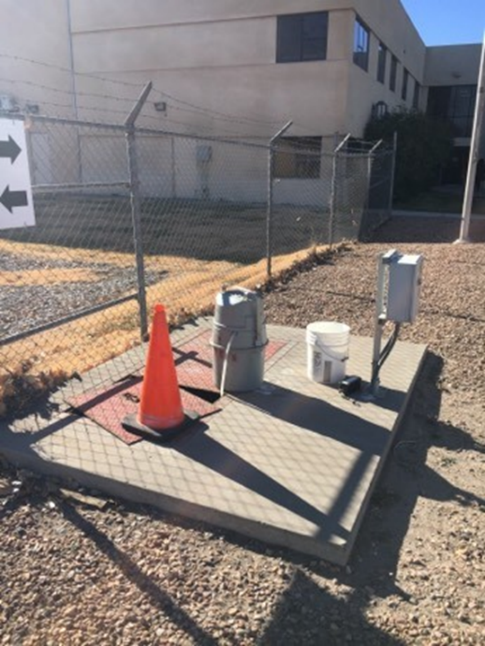
First of all, what is pretreatment for wastewater and sewer systems?
Pretreatment programs are often utilized by sewer authorities to protect their wastewater system and support their National Pollutant Discharge Elimination System (NPDES) permits, by establishing regulations that allow them to monitor the wastewater discharge of commercial entities in their community and administer enforcement actions when necessary. At their full capacity, pretreatment programs administer their own pretreatment permits and conduct sampling to establish the pollutant content of the wastewater discharged from categorical industries in their community. Categorical industries are specific types of industries that fit together into determined categories by the EPA, and are known to be associated with certain water pollutants. Pretreatment programs can also monitor other commercial industries of interest such as food service establishments (FSE), dental facilities, laundry mats, and automobile maintenance facilities.
Can pretreatment programs work for small systems?
Smaller systems often have only a small number of wastewater workers who manage the collection system, wastewater treatment and sometimes the community’s drinking water system as well. This means that smaller systems do not always have the capacity to manage a pretreatment program with the same functions as larger systems, but there are still many similar practices and concepts that these smaller systems can utilize to protect their wastewater treatment systems and support their NPDES permit. This includes recommending best management practices (BMP), creating records systems to track commercial users, and utilizing federal mechanisms to protect their system.
Best Management Practices for small wastewater systems implementing pretreatment
For commercial sewer users, BMPs are different strategies or practices used to prevent the illicit discharge of pollutants into the collection system. The most common application for BMPS in small systems would be for Food Service Establishments (FSE). Food service establishments are known to produce high amounts of fats, oils, and grease (FOG) compared to their domestic counterparts. Small systems may not have the capacity to monitor, inspect or sample the FOG concentrations of wastewater discharge from restaurants, but it may be more reasonable for them to produce educational material that can be distributed to food service establishments and community members. An example of some best management practices for pretreatment are:
- Never pour fats, oils, or grease down sinks or drains. Instead, collect them in designated containers for proper disposal.
- Install drain screens to catch food particles and prevent them from entering the wastewater system.
- Install properly sized grease traps/ interceptors and carry out regular required maintenance on them.
- Scrape or wipe food scraps and grease from dishes, pots, and pans into the trash before washing.
- Use paper towels or absorbent pads to wipe down greasy surfaces before cleaning with water.
- Consider reuse opportunities for used cooking oil.

Educational campaigns for pretreatment programs
You can use educational material to communicate these BMPs, paired with information on the impacts of FOG on the collection system to highlight the benefits of FOG prevention and regulatory requirements.
It is also simple to adapt this educational material for domestic use as well. A common example of this is a “can it, cool it, toss it campaign” (see example flyer in side bar), which encourages community members to store hot cooking grease or oil in heat resistant containers, allow it cool and solidify, and then dispose of it via solid waste. Educational material is most effective when it is tailored specifically to the community it is being distributed to. When developing this material, it is important to understand the target audience and utilize the type of media likely to reach that audience. This may involve designing material for traditional distribution methods such as pamphlets, community meetings, and billboards, or more contemporary methods such as email or social media. This type of material is a simple method for recruiting local businesses and community members with the goal of preventing excessive FOG from accumulating in the collection system and does not require a fully staffed pretreatment department to create.
Gathering data for pretreatment using surveys
Another example of how small systems may utilize pretreatment concepts to protect their system is through utilizing data gathering and record-keeping strategies similar to the ones used by fully realized pretreatment programs. Pretreatment surveys gather important operational information about commercial entities that help systems establish what type of wastewater discharge they may have, what actions they are taking to limit their impact on the system, and what overall threat they may present to the system, along with basic contact and location information. The information in these surveys is then entered into a database that varies in complexity from system to system. Some systems simply use spreadsheet software to track their data.
Data gathering is becoming increasingly easier as well with artificial intelligence applications that allow for data from paper documents to be easily digitized and automatically integrated into databases. This type of data can be useful to small systems in a variety of ways. For example, as we learn more about chemicals and substances used in different industries, we learn also about the hazards they may present to public health or the environment and in turn new regulations are developed to mitigate those hazards. Having detailed information on the industries in their area readily available allows systems to quickly identify who new regulations may apply to and can then quickly begin work on compliance actions.
Having records of the commercial industries in the area may also assist systems in identifying the source of plant upsets and collection system issues. If a wastewater treatment plant experiences periodic issues that follow a similar pattern, they may be able to track those issues back to the operation patterns of industries discharging to the system. One example of this is food industries that utilize acidic or alkaline chemicals that can significantly decrease or increase the pH of the wastewater in systems. If a system links a plant upset to a significant change in pH, they can explore the impact that a food processer may be having due to their wastewater discharge. Other examples of industrial related discharges include high biological loading from food processors, excessive chlorine used in cleaning processes, and businesses that use strong oxidizing agents.
Utilizing federal resources for pretreatment
Finally, even if a community does not have the capacity to fulfill these functions they can still utilize the pretreatment benefits that the Environmental Protection Agency (EPA) and Code of Federal Regulations (CFR) provide to protect their system. In the event that a small system does not have an approved pretreatment program, states approved to administer the National Pretreatment Program or the EPA would be the control authority in charge of administering the pretreatment program. The control authority is required to monitor industrial discharge and enforce pretreatment requirements. For systems interested in navigating the assistance options for pretreatment monitoring and transitioning towards the development of their own pretreatment program, we recommend they contact their state environmental department and their regional EPA office.
The EPA has developed guidance material on a variety of subjects to support pretreatment development and other topics covered in the CFR. Small systems can refer to the following links when developing pretreatment programs or deciding on what actions to take to protect their system:
EPA’s Introduction to the National Pretreatment Program

